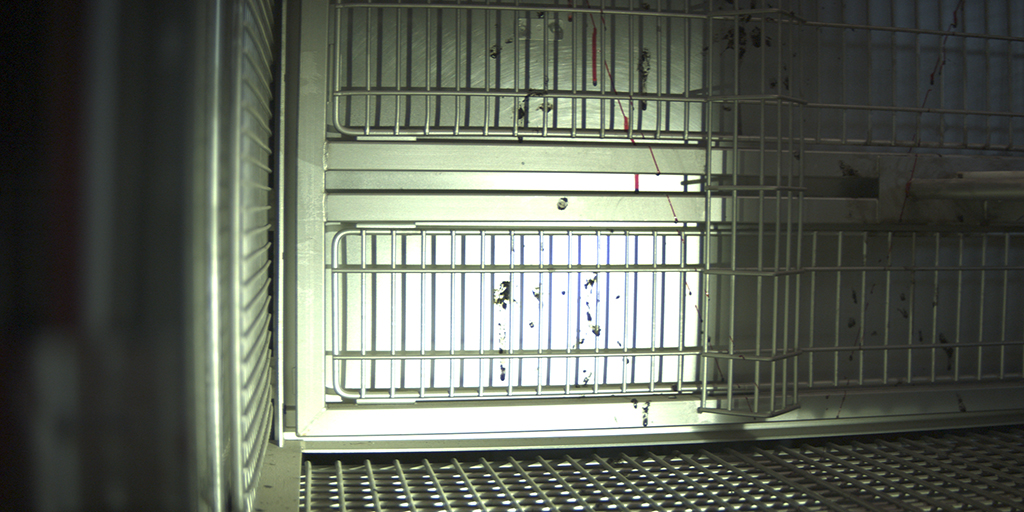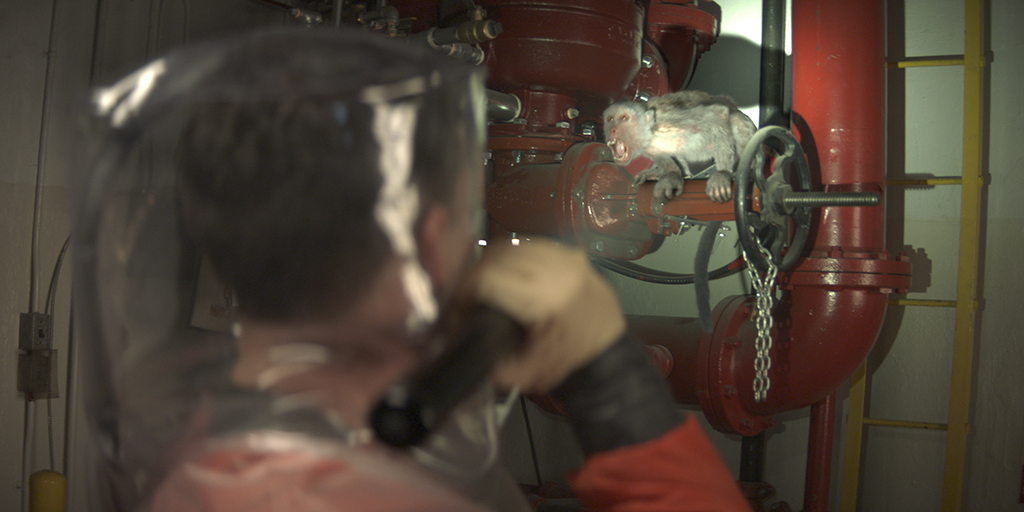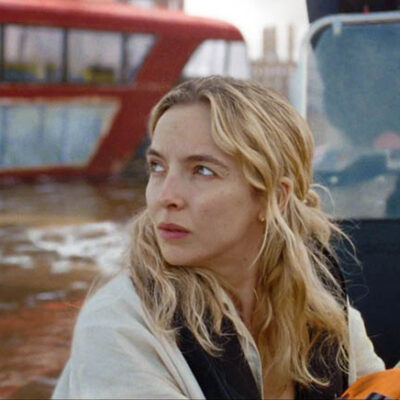By IAN FAILES
National Geographic’s The Hot Zone miniseries details just how fast the Ebola virus can spread. During the show, a research facility housing captive long-tailed macaque monkeys becomes the source of much of the drama.
Scenes with the macaques were achieved with CG re-creations of the animals, done by DNEG. The studio looked to real monkeys for reference, while also adding extra sores and other forms of neglect to show the hardship they have been through. Visual Effects Supervisor Michael Enriquez tells VFX Voice how the macaques were completed.
VFX Voice: What was the brief given to DNEG in terms of the macaques requirements for The Hot Zone?
Enriquez: We got a call that, due to political issues, they didn’t want to use any actual monkeys. So the discussion started on how viable would it be to have fully digital monkeys for the show, given the show didn’t exactly have a gigantic visual effects budget. We first started to just look into what we had in terms of existing assets, what could be done quickly. Unfortunately, there wasn’t anything that was already in place, but we did figure out that, as long as we limited the approach in some of the episodes, that it should all be viable.
VFX Voice: Given that you had to build these assets, where did you start with looking at real monkeys and gathering reference?
Enriquez: We were looking at a lot of different videos and imagery because there’s a ton of different types of macaque monkeys. And what it ended up being was specific to the macaque from the Philippines. We started to look into the specifics of the anatomy of their eyes, their overall structure, their size, variance of color, and then got into a lot of behavioral videos.
Every time we would be sending out any animation tests for approval of our blocking, everything would be accompanied by a reference video of a monkey doing something similar. And that really got us through a lot of the approval process pretty quickly, because it’s hard to argue with reality. Only when a story beat needed to be hit would we deviate too much from established monkey actions.
Initially, in the script, there was a plan for the monkeys to have claws, and also to have bloodshot eyes and a plan to be able to see that in the whites of their eyes. But the monkeys have no whites in their eyes. It’s all darker colored. So we had to figure out how they wanted to play the eyes up, or the fact that the fingernails on these monkeys are very much like humans. They’re not claws by any means, but we did have to slightly enhance them. We didn’t exactly break reality, but they’re a little bit longer, a little bit grungier than we would normally have in reality.
VFX Voice: What were some of the challenges you found when you were modeling and rigging and texturing the monkeys, especially relating to their fur?
Enriquez: The biggest challenge I would say is just how close we had to get to our assets for a TV show. Usually for a feature, you need to be going to the extent of having fine pores in the skin and all the scattering and making sure everything is done up to a certain level. And we had to figure out how to get a lot of that done in a very short amount of time and on a much tighter budget. But fortunately, we were able to focus on one main asset and then create the variations of that.
We had some creature work done for other projects that we were able to use as a jumping off point in terms of skin shaders and fur. We would first get the overall sculpt of the monkey looking how we generally wanted it, and then start figuring out the fur distribution, how many sores there were on the monkey, how much of the hair was actually falling out. And then everything was rendered out through Clarisse.
VFX Voice: Was there one particular scene or shot that was trickier than others?
Enriquez: There’s a shot in episode six of the monkey jumping onto the character Reese’s hood. Initially there was a lot of discussion around that scene because it’s not simple to pull off a practical actress wearing a floppy hood with a CG character on top of it. We were able to focus the shots on a few beats and shoot those with the hood and without the hood, and choose what takes would work best for trying to integrate a monkey on top of the hood.
From there, we would very roughly animate the monkey on her head and then take that animation into effects, and start to simulate the hood being stepped on and pressed on while we had to proxy up her face for a collision. So it ended up being a very complex scene.
Watch the trailer for The Hot Zone.















